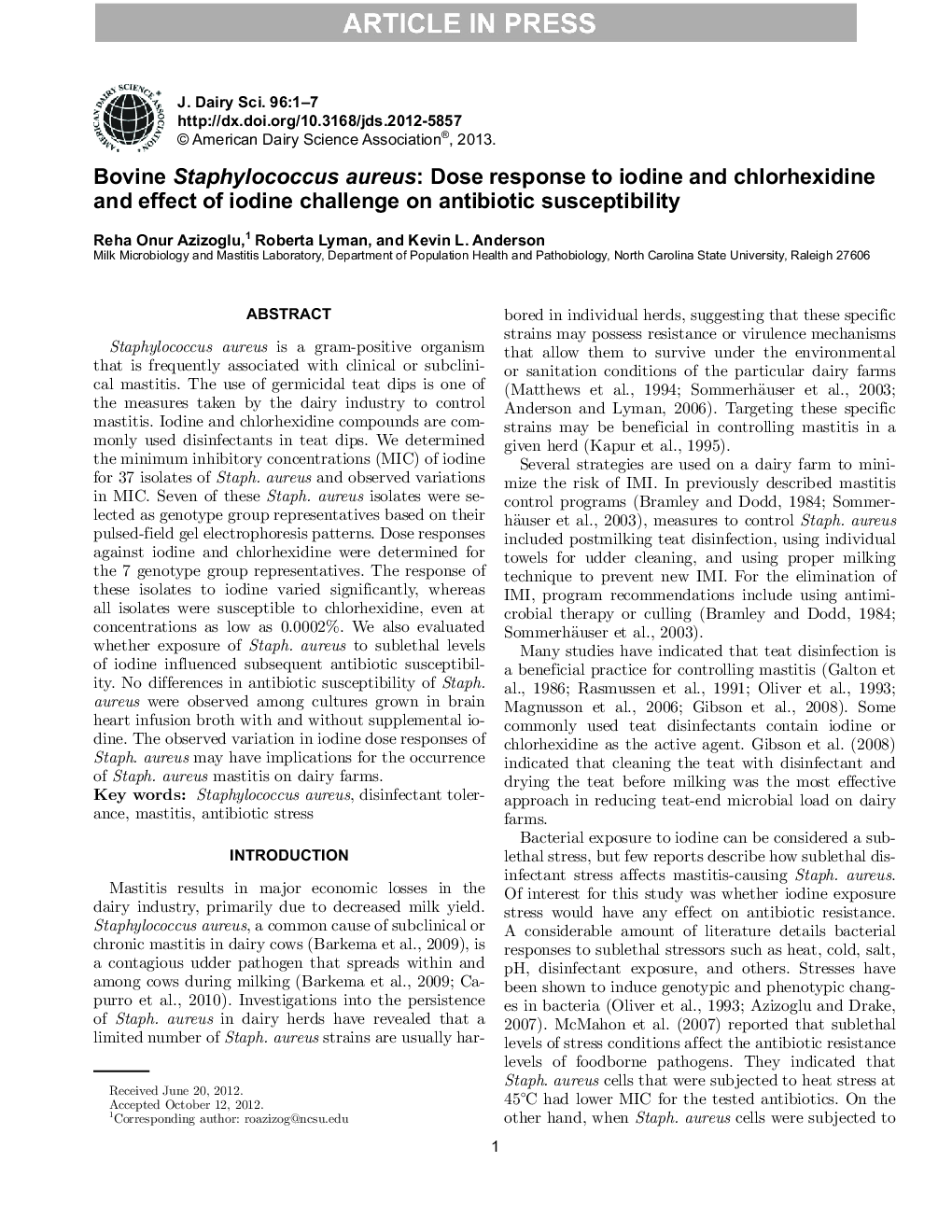| Article ID | Journal | Published Year | Pages | File Type |
|---|---|---|---|---|
| 10979911 | Journal of Dairy Science | 2013 | 7 Pages |
Abstract
Staphylococcus aureus is a gram-positive organism that is frequently associated with clinical or subclinical mastitis. The use of germicidal teat dips is one of the measures taken by the dairy industry to control mastitis. Iodine and chlorhexidine compounds are commonly used disinfectants in teat dips. We determined the minimum inhibitory concentrations (MIC) of iodine for 37 isolates of Staph. aureus and observed variations in MIC. Seven of these Staph. aureus isolates were selected as genotype group representatives based on their pulsed-field gel electrophoresis patterns. Dose responses against iodine and chlorhexidine were determined for the 7 genotype group representatives. The response of these isolates to iodine varied significantly, whereas all isolates were susceptible to chlorhexidine, even at concentrations as low as 0.0002%. We also evaluated whether exposure of Staph. aureus to sublethal levels of iodine influenced subsequent antibiotic susceptibility. No differences in antibiotic susceptibility of Staph. aureus were observed among cultures grown in brain heart infusion broth with and without supplemental iodine. The observed variation in iodine dose responses of Staph. aureus may have implications for the occurrence of Staph. aureus mastitis on dairy farms.
Keywords
Related Topics
Life Sciences
Agricultural and Biological Sciences
Animal Science and Zoology
Authors
Reha Onur Azizoglu, Roberta Lyman, Kevin L. Anderson,
